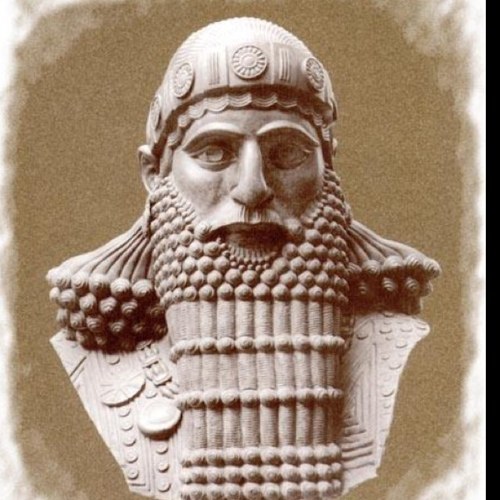Hammurabi ruled Babylon between 1792 and 1750 BC. According to the medieval history, he was the Amorite, the sixth king of Babylon, the first king of the Babylonian Empire. He inherited the rule from his father, "Sin Mopalit". Mesopotamia was divided states, Hammurabi is an empire comprising both Iraq and the cities near the Levant to the shores of the Mediterranean, Elam and other regions.
Hammurabi was a military figure with administrative, organizational and military capabilities, and his famous black diorite stone, now preserved in the Louvre in Paris, is one of the oldest and most comprehensive laws in Mesopotamia and even the world. The Hammurabi obelisk contains 282 articles dealing with various matters of life The law of Hamorabi, which was issued in recent years of the custody of the summit reached the unity of the country's political and civil law has applied to all the cities and territories included by the States The law includes various rules and legal provisions such as the principle of compensation and the principle of retribution and the principle of the inadmissibility of the abuse of the individual right and the principle of force majeure and was modified some laws and the addition of rules required by the new phase of the empire, and Hammurabi adopted a central policy depends on His authority was without any intervention by the priests. The empire was administered by the rulers who appointed them in the different cities and regions. Each ruler was responsible for the management of the regional affairs in general and his duties were concentrated in maintaining security and stability and supervising the implementation of public projects and the governorate. And his direct responsibility for the administration of the provinces and land. Hammurabi was in constant contact with the rulers of his provinces and his staff, directing them and giving them detailed comments on various issues, large and small, and is evidenced by the many royal letters he sent to his rulers, To the governor of the city of Larsa.
After the death of Hammurabi, five other kings, the "Smetos Detana", attacked the country's Hittites in 1594 BC. They conquered it, destroyed the capital and looted its treasures, then returned to the Taurus Mountains.
History :
King Hammurabi was one of the kings of the first dynasty that ruled the city of Babylon. He inherited the power of his father, "Sin Mobalit" and his rule in 1792 BC. Babylon was one of the states in the Sedimentary Plain. The kings who ruled before the Hammurabi were Babylon, Cebar, Kish and Porceba. Hammurabi defeated the Kingdom of Larsa in the south and the kingdom of Ashnouna. He also fought the Assyrian king Shamshi Adad I. He defeated the Elamites in the east and waged war against the southern Sumer kingdom and annexed it to his kingdom. The nearby cities in the Levant and its coasts and the fact that the empire is sublime and spread The Babylonian civilization and its culture in the countries which opened it and took great care of the Kingdom's administration and control. Hammurabi has carried out many projects, especially irrigation projects, spreading prosperity in the country, and paying special attention to religious affairs and justice.
Hamorabi used his surplus power to build walls of cities, temples and palaces. Private houses identified the narrow and winding streets of the city. The typical house had a central courtyard surrounded by rooms. The city was surrounded by a massive wall to defend it against the invaders. They traded food, textiles, building materials and livestock. Babylonian traders were deported to the Levant, Assyria and the kingdoms of the Arabian Gulf. They traded in textiles and grain for gold, silver and precious stones.
In 1801 BC, the Elamites attacked the city of Ashnouna and destroyed it. They also destroyed other cities. After that, the Elamites decided to fight Hammurabi. Hammurabi decided to cooperate with the Kingdom of Larsa, but the Kingdom of Larsa did not fulfill its promise to help Hamorabi because of their fear of the Elamites. However, Hammurabi managed to defeat them. Hamorabi then turned to the north and opened the city of Mary, Peru and Qatna and arrived in Diyarbakir in northern Syria, and in 1750 BC Hammurabi and the heirs of his son Samo Ilona.



